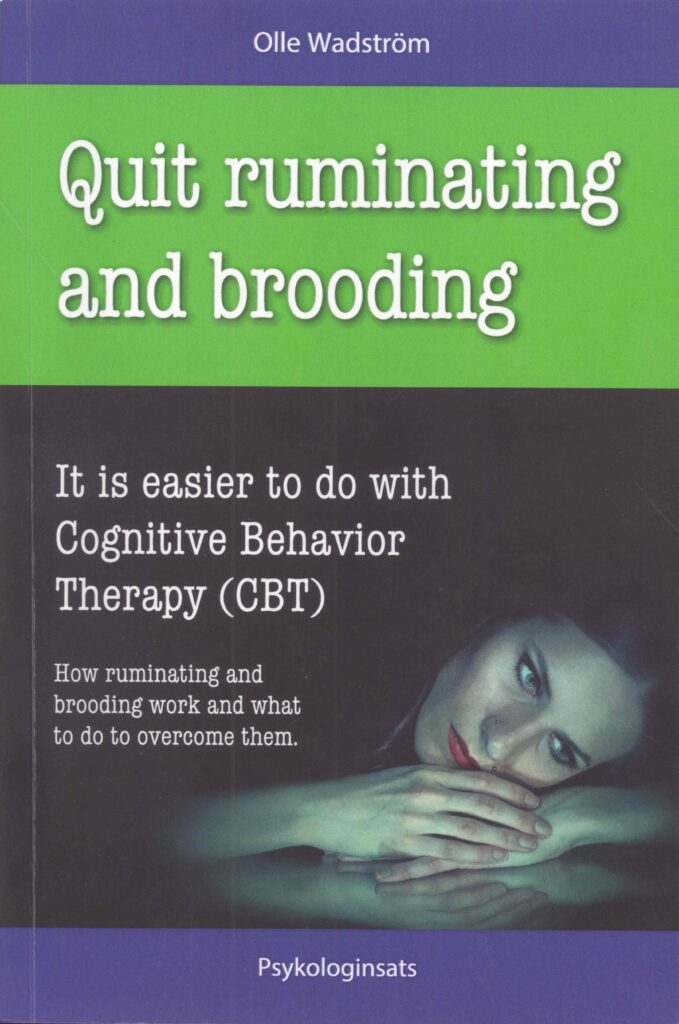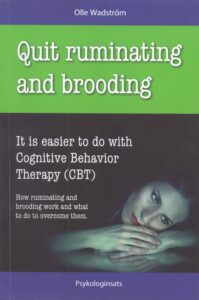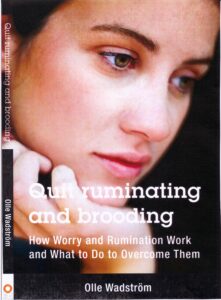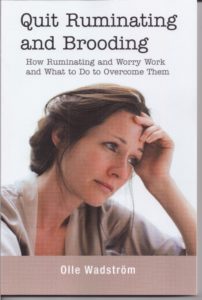When you google “stop worry” you find sites that redommend 5 steps, 9 steps or even 13 steps in order to stop your worry by distraction.
These steps sometimes are helpful for you to get rid of the worry instantly, but the worry unfortunately comes back. And that seems to be inevitable and the distraction seems to fuel the production of discomforting thoughts in the long run.
This new model for how to stop worrying and ruminating is aiming to train your brain to refrain from producing discomforting and worrying thoughts – to extinguish the habit of thinking discomforting and upsetting thoughts. This is a more permanent way to deal with the worry.
The new model was first presented in 2007 in the book “Quit ruminating and brooding“. It has now been tested in two very large scale studies (in press) with 140 subjects in the first study. In the second study (with 340 subjects) the new model has proven to be even more effective than the standard treaments for Generalized Anxiety Disorder (GAD) with their different stressmanagement methods.
What is so special about this new model?
It does indeed not strive to relieve your uneasiness immediatly, but to free you in a longer run and permanently.
It aims to train your warning or scary brain to refrain from seeking threats, dangers and producing discomforting thoughts when you are feeling low, guilty or are anxious and aroused.
The book “Quit ruminating and brooding” has become very popular in Sweden and the nordic countries (small countries in Scandinavia) and has sold more than 29000 copies to date. The book is easy to understand to anyone and it is appreciated by the common man as well as by psychologists and students. Why not try it? You might regret and worry about it if you do not.
The book is available in English since 2015
- Distraction might temporarily relieve the worry, but it is no cure. Instead it might prolong it.
- Eagerness to quit worry in a wrong way intensifies it.
- Refrain from comforting when afflicted by problems that cannot be solved.
- Do not seek answers to questions that have no answers.
- Do not try to understand things that are incomprehensible.
- If you accept the presence of your discomforting and intrusive thoughts – you eventually kill them.
- If you really want to learn how to quit worrying Read the book.
If you consider buying the book – please buy the green och black version. AuthorHouse (the white version of the book) is illegally printed and distriguted by AuhtorHouse/Author Solutions.



 Why is it so hard to make the hurtful thoughts disappear, even though you really want them to? What is the reason that ruminations go on and on despite our efforts to quit? What mechanism makes it persist even though we do “everything” to rid ourselves of it? Most of us have, at one point or another during our lives, wanted to end our ruminations instantly.
Why is it so hard to make the hurtful thoughts disappear, even though you really want them to? What is the reason that ruminations go on and on despite our efforts to quit? What mechanism makes it persist even though we do “everything” to rid ourselves of it? Most of us have, at one point or another during our lives, wanted to end our ruminations instantly. human beings become a burden.
human beings become a burden.